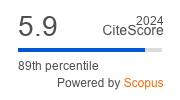Article | Open Access
Unestablished Boundaries: The Capabilities of Immersive Technologies to Induce Empathy, Tell Stories, and Immerse
| Views: | 1667 | | | Downloads: | 1825 |
Abstract: This article presents a critical viewpoint on the existing research to establish the boundaries of immersive technologies, such as virtual reality, exploring distinctions between sensorial and mental experiences and highlighting the influence of technological determinism in this scholarly domain. The analysis reveals a lack of established conceptual structures for categorizing distinct types of immersion, emphasizing that immersion is not universal and is not inherently technological. In particular, it highlights that, fundamentally, immersive technologies are not designed to immerse into narratives. As a result, this article suggests a dual cognitive framework of immersion to explain the nature of different immersive experiences. The article also critically addresses ethical concerns related to identity tourism and argues against the oversimplification of complex psychological processes, emphasizing the overreliance of the existing studies on visual or technological stimuli. To avoid this, the article suggests a way to avoid technological determinism in relevant conceptualizations. Overall, the article scrutinizes the assumptions associated with immersive technologies, offering insights into their capabilities to stimulate senses and vividly inform, contributing to a nuanced understanding of their effects and ethical implications.
Keywords: immersion; presence; storytelling; technology; virtual reality
Published:
© Eugene Kukshinov. This is an open access article distributed under the terms of the Creative Commons Attribution 4.0 license (http://creativecommons.org/licenses/by/4.0), which permits any use, distribution, and reproduction of the work without further permission provided the original author(s) and source are credited.


